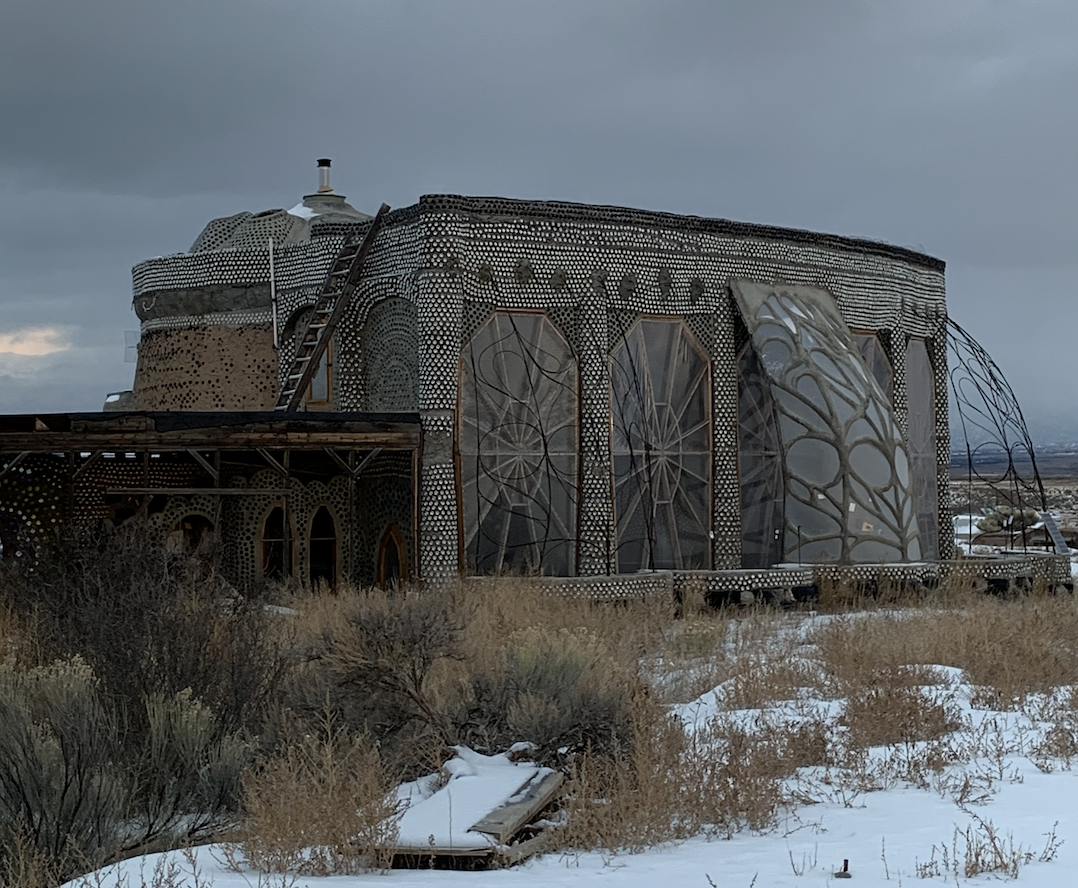REGENERATIVE DESIGN
Moving away from the speculative future projects and towards the practical application of systems thinking, we’ll look at how actualized projects in Florida and beyond are starting to meet the moment by embodying mutualistic design. We’ll blow past “green” and “sustainable” building as we strive to achieve a net-positive impact, where a home can produce more power, capture more water, grow more food, and sequester more carbon, through its design. We’ll look at the Earthships in Taos, New Mexico as a case study here, despite their high-desert climate being so different from ours. Earthships are passive solar earth shelters made of both natural and upcycled materials, that collect their own rainwater and grow indoor gardens with greywater. Florida’s “first Earthship” in Manatee County has had a rocky construction period for over a decade now, its DIY spirit crushed by our rigid building code.
A lot of the regenerative principles of the Earthships have been translated into detailed guidelines and the Living Building Challenge. The LBC is a philosophy, advocacy tool and certification program that encourages the creation of buildings that generate more energy than they use, capture and treat all water on site, and are made using healthy materials. We’ll check out some case studies of buildings certified under the LBC, and come to understand their certification system that evaluates a building’s relationship to place, water, energy, health + happiness, materials, equity, and beauty. Similar to LEED, the LBC provides pathways for scalability, so projects like this can become less experimental, and more mainstream.
A lot of the regenerative principles of the Earthships have been translated into detailed guidelines and the Living Building Challenge. The LBC is a philosophy, advocacy tool and certification program that encourages the creation of buildings that generate more energy than they use, capture and treat all water on site, and are made using healthy materials. We’ll check out some case studies of buildings certified under the LBC, and come to understand their certification system that evaluates a building’s relationship to place, water, energy, health + happiness, materials, equity, and beauty. Similar to LEED, the LBC provides pathways for scalability, so projects like this can become less experimental, and more mainstream.


Subthemes
- Adaptive Reuse / Retrofitting
- Earthships
- Net-Positive Systems
- Scalability
- Mutualistic design
- The Living Building Challenge
Examples:
- FIU Solar House‘
- 4Roots Regenerative Urban Farm Campus
- Florida Earthship - Pangea Design


![]()
RESOURCE LIST


